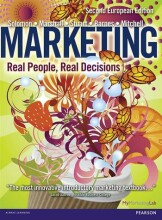Summary: Sensory Analyses
- This + 400k other summaries
- A unique study and practice tool
- Never study anything twice again
- Get the grades you hope for
- 100% sure, 100% understanding
Read the summary and the most important questions on Sensory Analyses
-
Lesson 1 term 2
This is a preview. There are 19 more flashcards available for chapter 01/12/2016
Show more cards here -
In what way is sensory different than analytical science?
Humans are the measuring instruments. That means that they are:
- Variable over time
- Variable among themselves
- Very prone to bias -
How do you solve variability over time and variability among people themselves?
Over time: multiple measurements over time.
Among themselves: increase group size. -
How can you decrease bias?
By minimalizing the psychological factors. -
What is the definition of physiological factors?
Stimuli that interact when presented simultaniously, -
What are physological factors that can influence the outcome of a test??
- Cross-adaptation
- Cross-potentiation
- Enhancement
- Synergy
- Supression -
What are the psychological factors that can influence the outcome of a test?
- Expectation error
- Habituation error
- Stimulus error
- Logical error
- Halo effect
- Order of presentation of samples
- Mutual suggestion
- Lack of motivation
- Capriciousness vs. timidity -
What are physical condition that your results can be influenced by?
- Fever/ cold
- Poor dental hygiene
- Emotional upset/stress
- Smoking (30-60 minutes before)
- Coffee (60 minutes)
- Large meals (2 hours)
- Make up, parfume -
What does the risk of adaptation mean?
When stimuli are presented after each other it influences how they are perceived. -
What is the difference between cross-adaptation and cross-potentiation?
With cross-adaptation a stimuli (sweetness level) is decreased in each following sample.
With cross-potentiation it is increased. -
What is an expectation error?
That the information that is given will trigger preconceived ideas.
- Higher grades + faster learning
- Never study anything twice
- 100% sure, 100% understanding




























